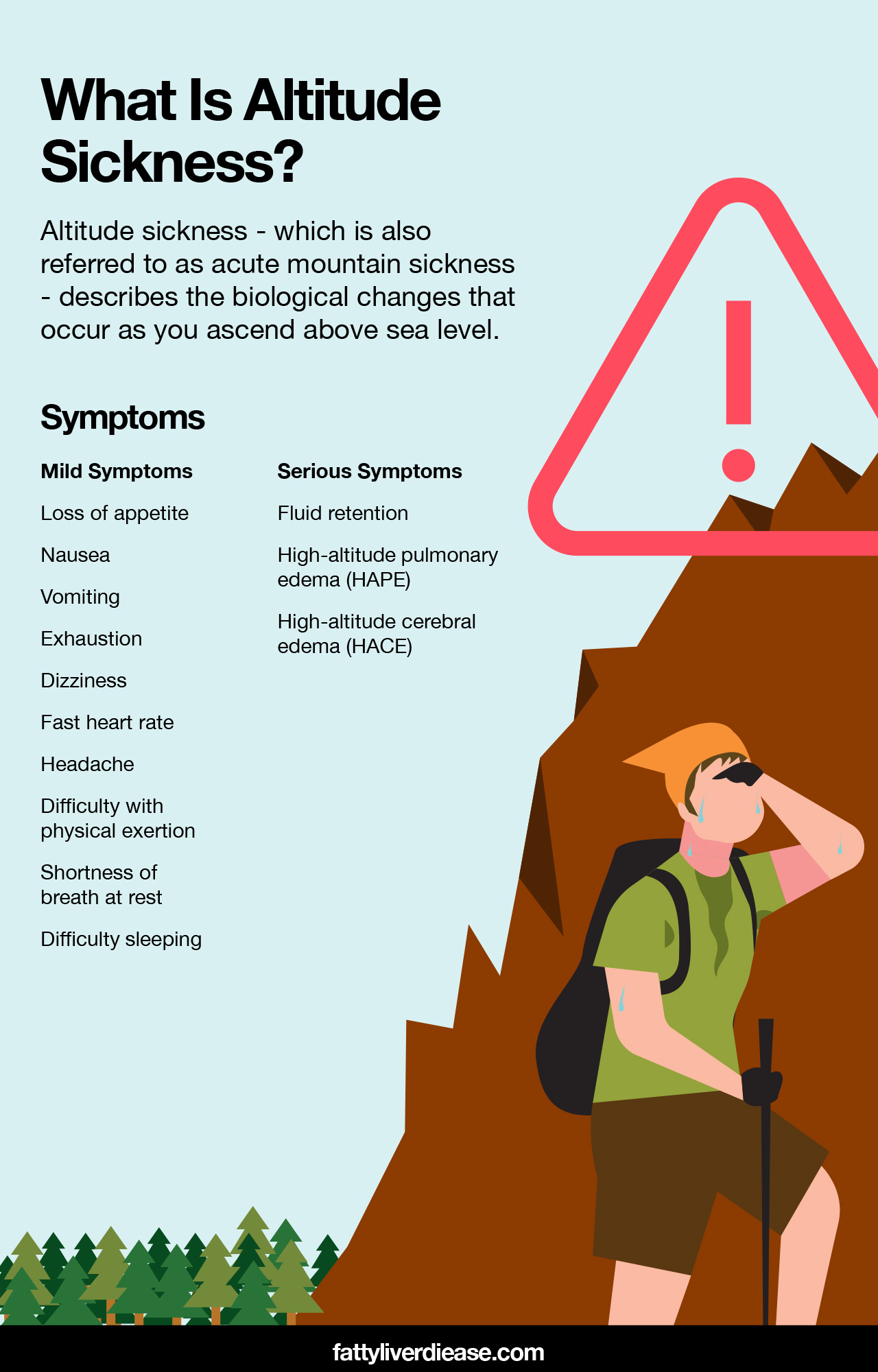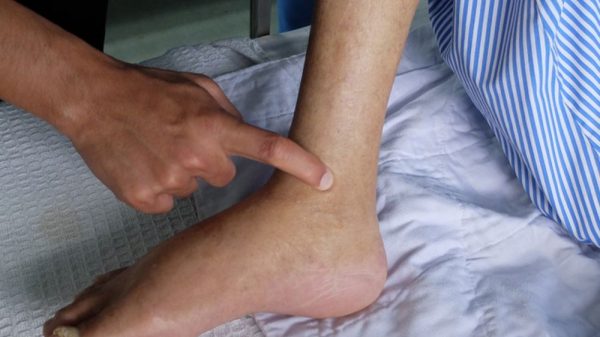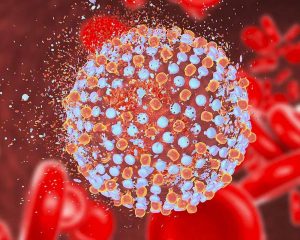Climbing, hiking, backpacking, mountaineering, and skiing are physically demanding activities that support muscle growth and promote metabolic health. Often, these activities are done at high altitudes that challenge and tax the body’s metabolic processes. How can you make sure that you consume sufficient calories and nutrients while avoiding altitude sickness at high elevation? Read on to find out how to prevent altitude sickness and stay healthy while partaking in outdoor sports.
What Is Altitude Sickness?
Altitude sickness – which is also referred to as acute mountain sickness – describes the biological changes that occur as you ascend above sea level. As you rise above sea level, the air becomes thinner, air pressure begins to drop, and less oxygen is available when you breathe. Symptoms of altitude sickness can begin to occur at around 5,000 feet above sea level (approximately the elevation of Denver, Colorado) and become progressively more severe as elevation above sea increases. Human life is not sustainable at altitudes above 20,000 feet.
Milder symptoms of altitude sickness may feel a lot like a hangover. Mild symptoms of altitude sickness at lower altitudes include:
- Loss of appetite
- Nausea
- Vomiting
- Exhaustion
- Dizziness
- Fast heart rate
- Headache
- Difficulty with physical exertion
- Shortness of breath at rest
- Difficulty sleeping
Symptoms at higher altitudes can be severe, and if not treated immediately, can lead to death. Serious symptoms of altitude sickness at higher altitudes include:
- Fluid retention: Oxygen deprivation at high altitudes causes cells and tissues to hold extra fluid. You may notice swelling parts of the body, including the face.
- High-altitude pulmonary edema (HAPE): This dangerous condition occurs when fluid accumulates in the lungs. HAPE causes congestion, coughing, coughing blood, extreme weakness, blueish tone in the skin, rapid pulse, and shortness of breath.
- High-altitude cerebral edema (HACE): HACE, like HAPE, is very dangerous and requires immediate medical attention. Symptoms of HACE result from fluid build-up in the brain. As fluid accumulates in the brain and pushes against cranial walls, neurological symptoms begin to occur. These symptoms include tiredness, fever, slurring speech, confusion, stumbling, blindness, and uncoordinated movements.
Causes of Altitude Sickness
Symptoms of altitude sickness are caused by hypoxia, a condition that describes the deprivation of oxygen. When insufficient levels of oxygen are supplied to your cells, tissues and organs are unable to function properly.
However, not all individuals will develop altitude sickness between 5,000-10,000 feet above sea level. There are other factors that may increase a person’s susceptibility to developing altitude sickness.
- Genetic traits: Some people naturally have inherited genes that increase biological resistance to the negative effects of high altitudes.
- Adaptation: Individuals who live at sea level are adapted to lower elevations and therefore face a higher risk of developing altitude sickness. Individuals living at higher altitudes have the opportunity to adapt to higher elevation and have a lower risk of developing altitude sickness.
- Exertion: Lots of physical activity and exertion makes you more easily winded and increases oxygenation demand throughout the body, which can increase your risk of developing altitude sickness.
Keep reading to learn how to avoid altitude sickness, including altitude sickness remedies.
Tips for Altitude Sickness Prevention
There are steps you can take to make it less likely that you’ll develop altitude sickness.
1. Ascend Slowly
When you’re hiking, backpacking, or climbing up a mountain, it’s important to ascend at a slow rate. When you begin approaching 8,000 feet above sea level, it’s a good idea to spend a night at each elevation, to allow your body time to adjust. The process of giving your body time to adjust to a new altitude is called acclimatization. As you acclimatize, your body compensates for the lack of oxygen by increasing the production of red blood cells, which are responsible for carrying and delivering oxygen to all parts of your body. More red blood cells allow for more efficient transport and utilization for what little oxygen may be available.
Making massive gains in elevation each day drastically decreases your body’s ability to adapt to decreased oxygen concentrations and increases your risk of developing altitude sickness.
2. Avoid Unnecessary Physical Exertion
Think about times you’ve engaged in rigorous physical exercise, such as running sprints. You’re left out of breath with a fast heart rate. Imagine exerting minimal energy while at high altitude, but you feel similarly out of breath with a fast pulse. When combining high elevation with extreme physical exertion, it’s difficult for the body to compensate. When partaking in physically demanding sports like hiking, backpacking, or climbing, make sure to take frequent breaks to allow your body to adjust.
3. Stay Hydrated
When at higher altitudes, the body tends to be more prone to dehydration than at lower elevations. Drinking enough water is vital for helping prevent signs of altitude sickness like headaches and weakness. Maintaining a high level of hydration is important for balancing the impacts of acetazolamide, a medication used to prevent altitude sickness.
4. Ginkgo Biloba
Ginkgo biloba is a natural herbal remedy that has been touted as an effective preventative treatment for altitude sickness. In a study published in Wilderness & Environmental Medicine, researchers evaluated the impact of ginkgo balboa supplementation on preventing altitude sickness. The study evaluated subjects at 3696 meters above sea level, in comparison to subjects taking acetazolamide or a placebo. Fascinatingly, results revealed that the experimental group receiving ginkgo biloba had significantly fewer indicators of acute mountain sickness when compared to either the acetazolamide group or the placebo group. (1)
This suggests that supplementing with ginkgo biloba before ascending in altitude may have a protective effect against symptoms of altitude sickness.
5. Acetazolamide
Acetazolamide, sold under the brand name Diamox, is an effective pre-treatment for preventing altitude sickness. As mentioned above, acetazolamide is a medication that behaves as a diuretic and helps prevent fluid retention that can lead to swelling and edema that may result in serious conditions like HAPE and HACE. This medication also helps decrease pressure in the brain. Acetazolamide also plays a role in mediating other biological mechanisms that lead to altitude sickness, such as preventing acid build-up in the blood and increasing oxygen.
Acetazolamide is a popular medication used as the first line of defense in preventing altitude sickness.
6. Dexamethasone
Dexamethasone, like acetazolamide, is used to prevent altitude sickness or acute mountain sickness. However, dexamethasone employs a different mechanism when protecting against symptoms of altitude sickness. Instead of directly preventing fluid build-up, dexamethasone instead inhibits inflammatory processes that lead to concerning symptoms of altitude sickness.
7. Sleeping Pills
When you’re at high altitude, your sleep quality is negatively impacted. Your body may even get less circulating oxygen while you sleep, which can be dangerous and increase detrimental symptoms from systemic oxygen deprivation.
Acetazolamide may help you sleep at high altitudes. To further increase sleep quality, use sleeping pills that are approved and prescribed by a wilderness medicine or high altitude medicine specialist and don’t affect breathing rate.
Alternatively, if possible, sleep at a base camp that is positioned at a lower altitude. Getting a better night’s rest is vital for reducing inflammation and helping your body cope with conditions at high altitude. Without enough sleep, your body is more susceptible to altitude-induced inflammation and cellular damage.
8. Avoid Alcohol
Though it may be tempting to celebrate a successful ascent with alcohol, it’s important to refrain from alcohol to reduce the likelihood of developing altitude sickness. Alcohol exacerbates dehydration and leads to inflammation throughout the entire body, including the liver, brain, and heart. Remember, your body is already under significant stress by simply functioning at high altitudes. Avoid placing any more stress on the body that might create an even more taxing environment.
9. Stay Warm
Even during the summertime, the atmosphere gets cooler as you ascend to a higher elevation. Make sure you wear plenty of layers to contain body heat. If your body begins to get cold, the body then begins expending energy to create heat and keep vital organs warm. This is valuable energy that can be spent in other ways. Keep your body warm by wearing synthetic long underwear, wind guards, fleece jackets, and heavier down jackets. Make sure to plan your clothing appropriately when you’re preparing for your trip.

What to Do If You Develop Altitude Sickness
If you develop symptoms of altitude sickness, it’s important to act immediately to prevent the escalation of symptoms.
Treating Mild Altitude Sickness
For the treatment of headaches, dizziness, and inflammation, take an over-the-counter pain reliever like ibuprofen and drink plenty of water. Medication like promethazine may help resolve vomiting and nausea, allowing your appetite to return so you can replenish your energy.
As soon as you feel mild symptoms of altitude sickness, stop all physical activity, and rest. Avoid ascending to higher altitudes, which would likely worsen symptoms.
It’s critical to stay very mindful of your symptoms. Mild symptoms of altitude sickness should resolve within 24-48 hours as you rest and acclimatize to the altitude.
If symptoms do not improve, it is vital to get access to supplemental oxygen if available. If unavailable, begin to descend to a lower altitude as soon as possible.
Treating Severe Altitude Sickness
When more serious symptoms of acute mountain sickness set in, the only effective treatment is returning to a lower altitude and increasing oxygen.
Once signs of pulmonary edema or cerebral edema appear, timely medical attention is critical for survival.
Maintaining Muscle Mass at High Altitude
In addition to preventing altitude sickness, it’s important to also maintain your health. When climbing, hiking, and backpacking in the mountains, maintaining lean muscle mass is crucial not only for a successful trip but also for survival.
The Impact of High Altitude on Body Composition
Functioning at high altitude takes a toll on the body.
Exercising and exerting energy at high altitudes is taxing on all organ systems and may lead to rapid weight loss and loss of lean body tissue. This is backed up by science. Research published in the International Journal of Sports Medicine found that prolonged exposure to high-altitude atmosphere resulted in muscle wasting and dehydration. (2)
A research article published in Nutrients and produced by the Division of Nutrition at the University of Utah produces an in-depth review of nutritional methods for optimizing health at high altitudes. (3) Researchers have explored the reasons for muscle wasting and metabolic changes at altitudes around 5,000 meters above sea level. (3) In part, muscle wasting can be attributed to dampened appetite at high altitudes, which often causes a decrease in overall energy and protein intake. In large part, however, sustained functioning at less than ideal oxygen levels likely impacts biological mechanisms responsible for protein metabolism and synthesis. (3)
Researchers have also explored the possibility of increasing protein intake while at high altitude. However, digesting protein requires a significant amount of energy to break down into individual amino acids and then deliver them to tissues throughout the body. At high altitudes, the body simply can’t afford to spend significant amounts of energy breaking down protein. In a hypoxic state, the body requires energy to fight inflammation and promote the normal functioning of all organ systems. Moreover, increasing protein quantity in the diet at high altitude may increase the sensation of fullness and worsen loss of appetite, leading to a decrease in overall caloric intake that is ultimately detrimental.
Essential Amino Acids May Combat Muscle Wasting at High Altitude
Research published in Metabolism found that the serum levels of essential amino acids decreased after spending two weeks at an altitude of 14,100 feet above sea level. (4)
Supplementing with essential amino acids, particularly leucine, may play a role in preventing muscle wasting and preserving lean body mass at high altitudes. (3)
Though further research is needed to confirm the preventative effects of essential amino acid supplementation on muscle wasting specifically at high altitudes, it so far seems like a promising solution. By supplementing with essential amino acids, the body can circumvent protein digestion process that’s costly for energy reserves, and instead absorb the purified building blocks of protein.
Essential amino acids, in optimally balanced ratios, are critical for fueling healthy immune system function and muscle synthesis. During normal circumstances – i.e., at sea level – the body requires a balanced dietary intake of essential amino acids on a daily basis. However, during periods of stress, such as healing from an injury or recovering from an illness, daily utilization of essential amino acids may be higher, requiring an increased intake. Based on research, the same principle applies to function at high altitudes. At higher elevations, the body is under significant stress and presumably utilizes essential amino acids at a fast rate than when at sea level.
Other Methods for Maintaining Muscle Mass at High Altitude
In addition to supplementing with essential amino acids, supplementing with antioxidant compounds may have positive impacts on muscle mass maintenance at high altitudes.
A study conducted by researchers at the Defense Institute of Physiology and Allied Sciences in India found that curcumin may play a role in preventing muscle atrophy at high altitude. (5) Researchers placed rats in low-pressure, low-oxygen environments to simulate the atmosphere at high altitudes. They administered curcumin to the experimental group and administered no substances to the control group. After two weeks, results revealed that the experimental group had less protein breakdown and more muscle fibers than the rats in the control group. (5) On a molecular level, curcumin helped to reduce oxidative stress associated with exposure to a high-altitude environment. Increased oxidative stress in body tissues alters metabolic mechanisms in the body, causing more protein breakdown and subsequent muscle wasting. (5)
Curcumin is a bioactive compound that exerts potent antioxidant activity and is found in turmeric, which is a spice commonly used for cooking. This research is a promising sign that the consumption of antioxidant compounds like curcumin may have significant implications for increasing the body’s ability to cope with the stress of being at high altitudes.
Antioxidants are able to directly combat oxidative stress. Oxidative stress is the manifestation of stress on a molecular level. When the body is pushed to its limit and is under a significant amount of stress, cells begin to function less efficiently, and waste products build up in cells, which further impedes healthy functioning. Antioxidants can help clear cellular waste and help biological mechanisms run smoothly again.
Potentially, consuming both essential amino acids and antioxidant compounds would have a synergistic effect in promoting the maintenance of lean muscle mass while exercising at high altitudes.
Is There Anything Else You Can Do to Prepare for a Mountain Trek?
If you’re planning to spend a considerable amount of time climbing and exercising at a high altitude, it is important to check in with your doctor and make sure you have no underlying heart conditions or pulmonary conditions that may preclude you from taking the trip.
In preparation for your trip, make sure to maintain healthy body weight and keep your metabolic health and liver health in check by engaging in regular physical activity and following a healthy diet. Having a sufficient amount of lean muscle mass before your trip helps compensate for the muscle wasting that may occur at higher altitudes. Leading up to your trip, consume a diet full of fruits, vegetables, whole grains that are rich in complex carbohydrates, and lean proteins that offer optimal ratios of amino acids.
Even though being in great physical shape won’t make you immune to altitude sickness, it will help you handle other strains that high altitude exertion places on your body.
How to Prevent Altitude Sickness: Conclusion
Altitude sickness is a potentially serious condition that results from low oxygen availability at high elevation above sea level. Medications, acclimatization strategies, and proper intake of fluids can help prevent altitude sickness. However, once symptoms are present, descending to lower terrain is important for preventing further complications and life-threatening symptoms. In addition to preventing altitude sickness, it is imperative to also ensure that you maintain muscle mass while exercising at high altitudes. Adding a high-quality essential amino acid supplement to a calorie-dense, nutrient-rich diet at high altitude may be helpful in maintaining lean muscle mass and preventing muscle wasting. Protecting your health by exercising preventative measures for altitude sickness and promoting a healthy body composition will ensure that your backpacking, hiking, or climbing trip is as successful as possible.
References:
(1) https://www.ncbi.nlm.nih.gov/pubmed/18076292
(2) https://www.ncbi.nlm.nih.gov/pubmed/1483750
(3) https://www.ncbi.nlm.nih.gov/pmc/articles/PMC3942726/
(4) https://www.sciencedirect.com/science/article/abs/pii/0026049568901054























